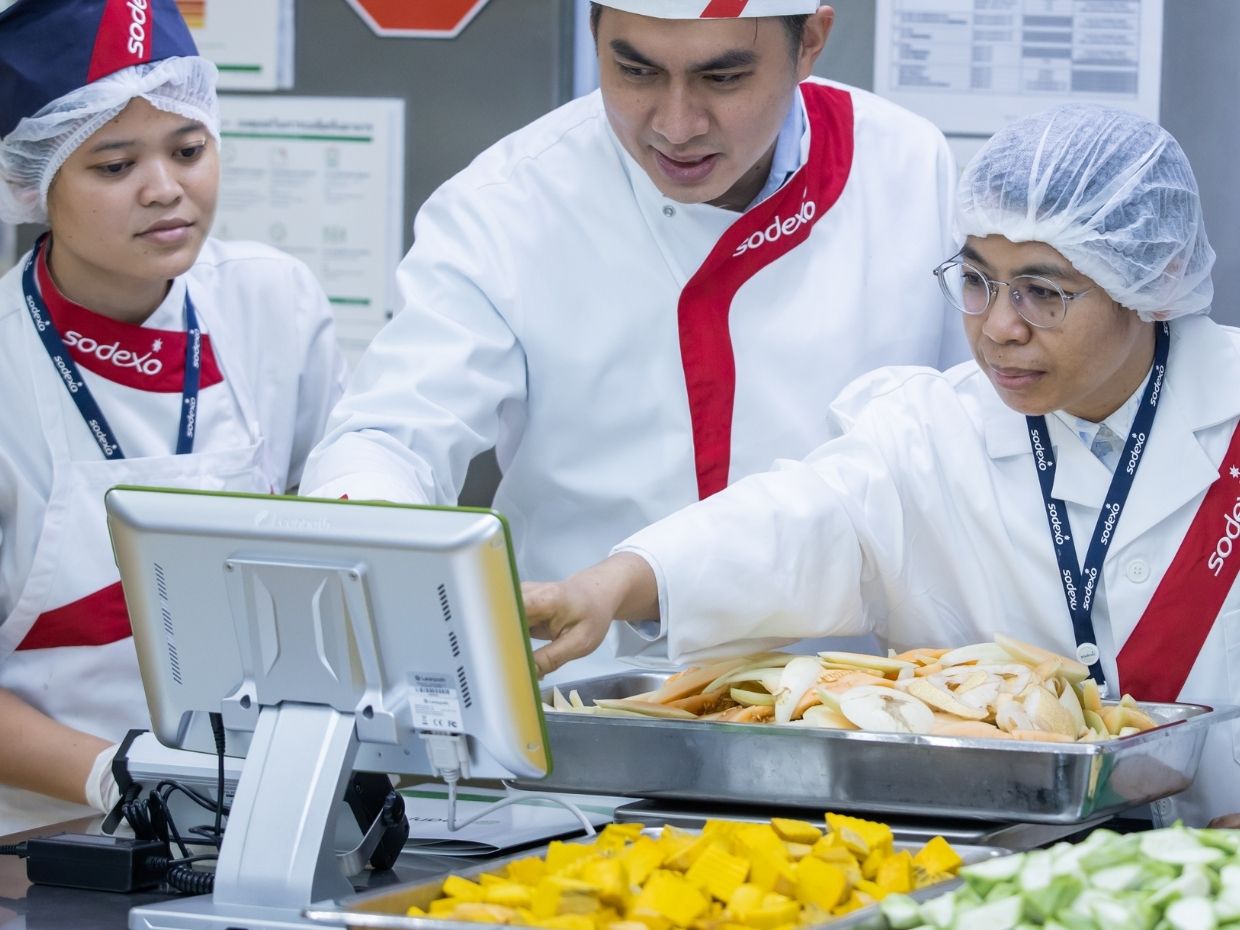Food waste is one of the most pressing issues of our time.
Even with advances in technology allowing us to produce more food than ever before, it is estimated that over 800 million people globally are under-nourished. If food waste were a country, it would also be the third largest carbon emitter in the world. It is important therefore, that we all take steps, whether at home or at the workplaces to reduce food waste and use the resources.
At Sodexo, our talented chefs are also some of our biggest advocates when it comes to reducing food waste. Three of our chefs from the Asia Pacific region share the key actions they take in their kitchens to reduce food waste.
Making ingredients go the extra mile
Often in the cooking process, there will be parts of ingredients that end up in the trash such as trimming and peels. However, our chefs use their experience and knowledge to put these parts to good use, rather than sending them to landfills.
Chef Kim Yang, who currently works at a technology client’s site in China, plans ahead and selects ingredients with multiple uses. For instance, the trimmings of certain root vegetables are used to make Chinese cold dishes – appetisers or palate cleansers in Chinese cuisine. An expert at meat, Chef Kim is also able to make full use of each meat product in cooking, such as braising tougher cuts for a hearty “red-braised” beef noodle soup, or using trimmings and offcuts in a “gao tang”, a constantly simmering pot of soup that is used as a flavourful base for several other dishes.
Chef Ashwin Iyangar from India also leverages on his deep knowledge of local cuisines to reduce food waste. Coriander root, for instance, is often discarded when chefs process the ingredient. However, drawing inspiration from a regional Gujarat dish, “anda ghotala”, Chef Ashwin creates an aromatic paste from coriander root to be used in other dishes, rather than tossing it in the bin.
“In cooking, it’s how you make full use of the ingredients, vegetables, meats and fruits – to make more items,” Chef Alan Tng from Singapore shares. Chef Alan utilises fruits in a number of ways. Fresh fruits are provided to consumers for a healthy snack or sliced into salads, while fruits that are closer to their expiry are boiled down into jams, or macerated and used for ice cream toppings, extending the shelf life of the fruit and preventing it from going to waste. Even fruit peels are used to make infused water as a healthier alternative to sodas.
Leveraging on innovations to reduce food waste
Our chefs also use WasteWatch, Sodexo’s data-driven, food waste reduction technology solution, to control food waste at our clients’ sites.
“It takes about a month,” Chef Alan says, “for the team to get used to the WasteWatch system and start making use of the data that comes in.” Analysing the data, on-site teams make informed operational and behavioural changes around procurement and menu planning, reducing food waste and optimising costs.
Chef Ashwin shares how the WasteWatch data helps the teams make better choices on procurement: “It helps us to analyse where the issue is. For instance, is there an issue with the quality of the ingredients and they have to be discarded, or are we over-preparing certain dishes.”
Chef Ashwin also makes use of convenience products, such as various pastes, to reduce the long cooking times required by many Indian dishes and enable smaller batch cooking, which in turn, reduces waste. Briyani, an Indian spiced rice, is one such dish made using this method, and Chef Ashwin assures that after extensive testing and customising the seasonings for different regional variations, the convenience products taste as good as the made-from-scratch versions.

From left to right: Chef Alan Tng, Singapore; Chef Kim Yang, Greater China; Chef Ashwin Iyangar, India
Engaging with diners
On-site, the teams also ensure that we’re engaging with our diners and customers, reminding them of the need to take only what they can finish and of the environmental impact of food waste.
In China, Chef Kim mentions, the team conducts an annual “clean your plate” campaign. When diners finish all the food on their plate, the Sodexo China team donates money towards Hope Gardens, an initiative aimed at improving nutrition in rural areas in the territory. This activity is well-received by diners, who feel that they are making a contribution towards a good cause.
Interacting with consumers and observing what they like to eat is also important, says Chef Alan. By observing what they choose to discard or leave uneaten on the plate and asking for feedback, this also further informs menu-planning and recipe tweaking, to create more appetising dishes that diners will polish off.
Reducing food waste is a team effort and requires the collaboration of multiple stakeholders, including clients, diners and other valued partners. As experienced members of the culinary team, our chefs play an important role to pass on their knowledge and experience in finding new, creative ways of conserving resources and reducing food waste.
